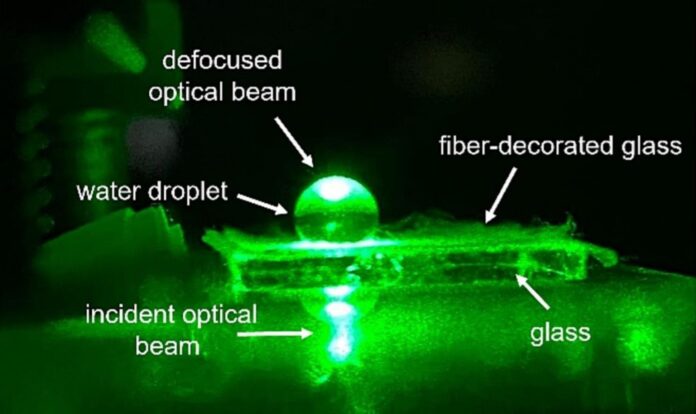Filipino scientists have discovered a simple and affordable way to create dynamically adjustable water-based lenses with potential applications ranging from classrooms and research labs to cameras and wearable devices.
The Ateneo de Manila University said the research was led by Marco Laurence Budlayan and Dr. Raphael Guerrero from the Ateneo de Manila University School of Science and Engineering -Department of Physics, along with colleagues from Caraga State University, Pangasinan State University and the University of the Philippines – Diliman. Their findings will be published in the May 2025 issue of Results in Optics.
“By coating an ordinary glass slide with specially prepared polyvinyl chloride (PVC) plastic, the researchers created a hydrophobic surface capable of holding a water droplet in a dome shape similar to a magnifying glass. They found that by adding or removing water from the droplet, they could change and control the magnifying power of this liquid lens with minimal loss or distortion,” the university said.
In a process called electrospinning, the researchers melted the PVC in an electric field, which stretched out and deposited the plastic onto the glass slide as very fine microfibers.
This made the surface of the slide more water-repellent, causing water droplets to maintain a spherical dome shape instead of flattening. By placing droplets of different sizes on this surface and shining a laser through them, the researchers observed that the light beam widened or narrowed depending on the droplet’s size.
Larger droplets acted like lenses with longer focal lengths, while smaller droplets behaved like close-up lenses, with the laser maintaining a clean and undistorted beam.
“Because the method is low-cost, simple to execute and easy to use, the discovery has multiple potential practical applications. It could be used in science classrooms to teach optics, particularly in schools with limited lab equipment. In remote or low-resource areas, it could help build basic optical tools for experiments or diagnostics,” the university said.
In research labs, it offers a quick way to adjust laser beams. The findings also lay the groundwork for more advanced liquid lenses for possible use in cameras, microscopes, and even wearable technology. With further development, it might also be used in portable diagnostic devices or small projection and lighting systems.








